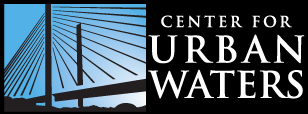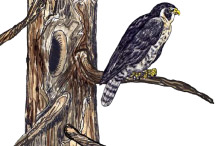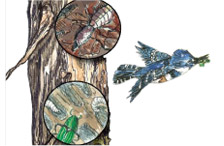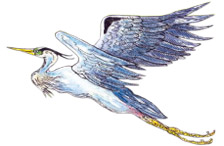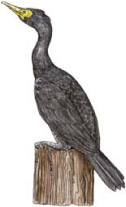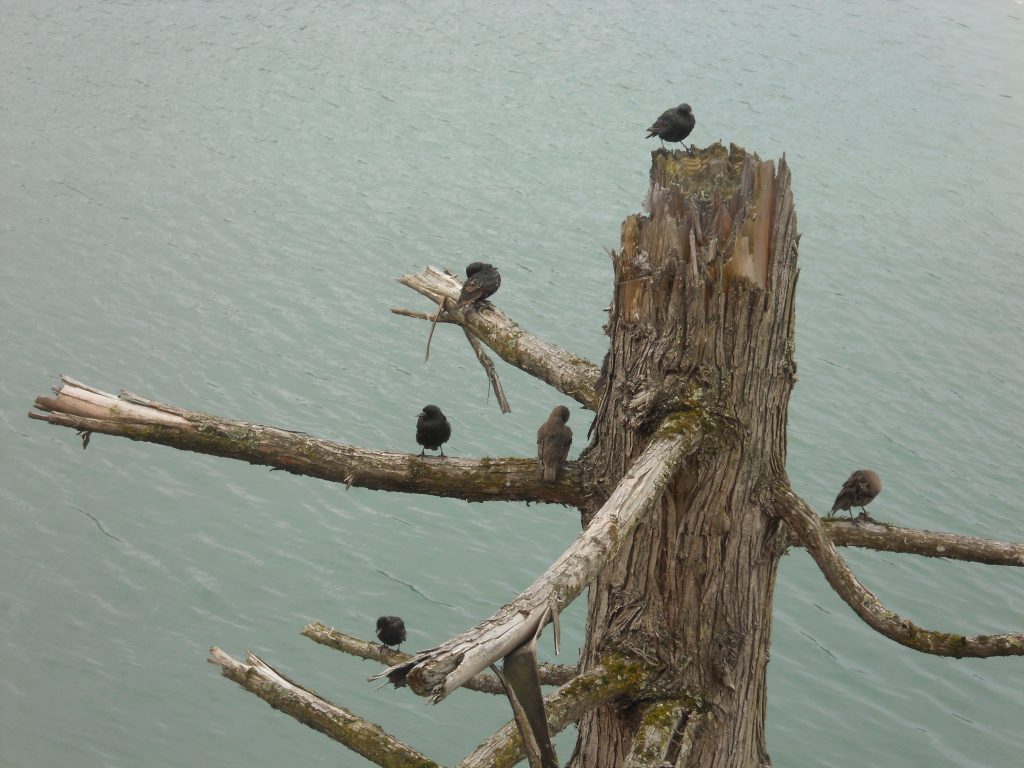 Tree snags are for the birds: feed, perch, nest
Tree snags are for the birds: feed, perch, nest
Sustainably harvested cedar and Douglas fir snags (dead trees) provide staging, feeding and nesting habitat for birds and small animals. Snags also:
- Attract insects and mosses that become food for many species.
- Provide cavities for birds and small animals to nest.
- Serve as a resting place for birds near a busy industrial waterfront.
- Act as vertical sculptural elements and provide bird-watching opportunities.
The Douglas fir snags were removed from a site being developed for housing. The cedar snags had been identified as danger trees — meaning they could potentially strike occupied buildings in a storm — at an already developed site.
